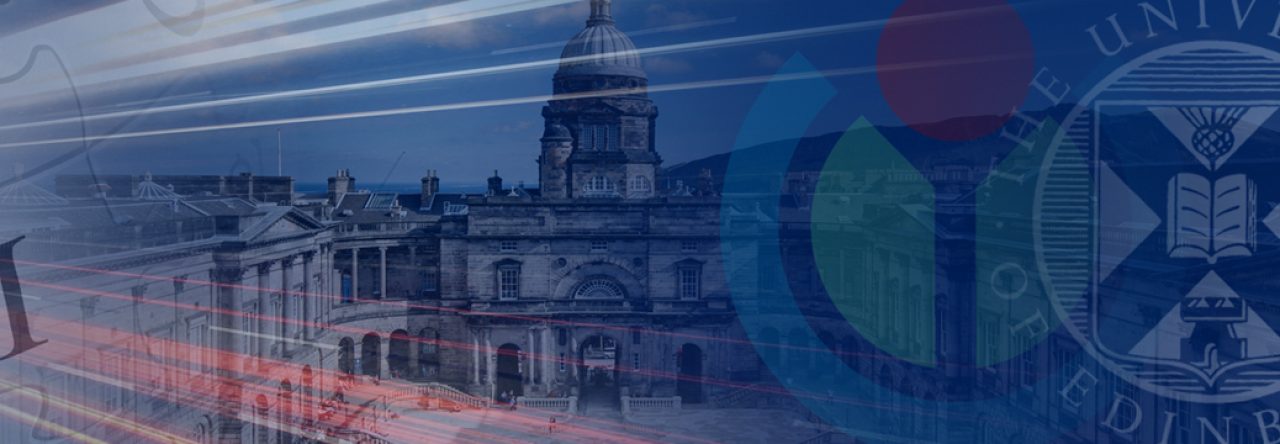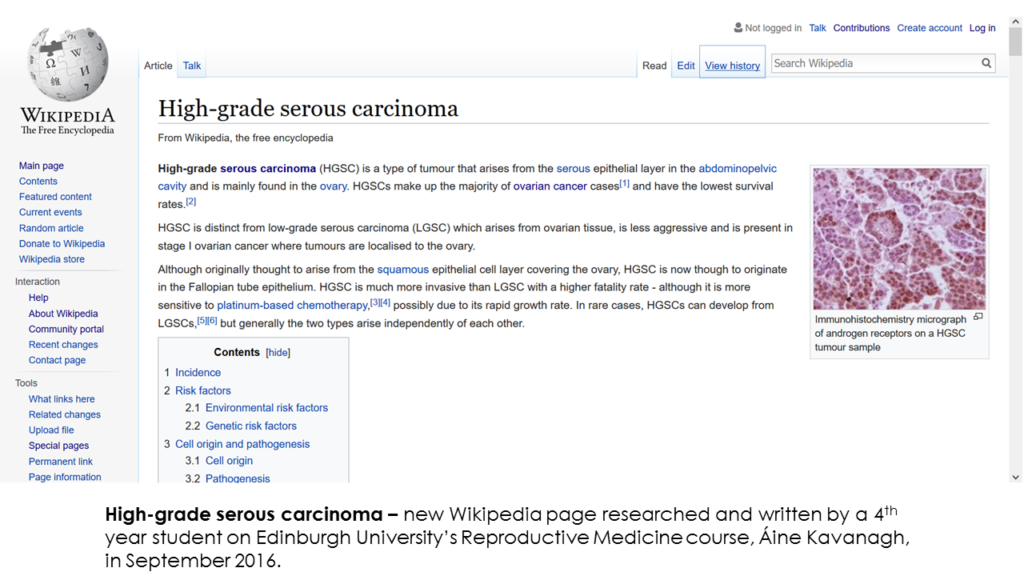
Month: January 2017

Wikipedia as an important source of health information and not medical advice.
“The Internet, especially Wikipedia, had proven its importance in everyday life. Even the medical sector is influenced by Wikipedia’s omnipresence. It has gained considerable attention among both healthcare professionals and the lay public in providing medical information. Patients rely on the information they obtain from Wikipedia before deciding to seek professional help. As a result, physicians are confronted by a professional dilemma as patients weigh information provided by medical professionals against that on Wikipedia, the new provider of health information….
Reproductive Medicine Wikipedia assignment at Edinburgh University – September 2016

Reproductive Medicine undergraduates – collaborating to create Wikipedia articles.
In September 2016, Reproductive Biology Honours students undertook a group research project to research, in groups of 4-5 students with a tutor, a term from reproductive biomedicine that was not yet represented on Wikipedia. All 38 were trained to edit Wikipedia and they worked collaboratively both to undertake the research and produce the finished written article. The assignment developed the students’ information literacy, digital literacy, collaborative working, academic writing & referencing and ability to communicate to an audience. The end result was 8 new articles on reproductive medicine which enriches the global open knowledge community and will be added to & improved upon long after they have left university creating a rich legacy to look back upon.
One of the new articles, high-grade serous carcinoma, was researched and written by 4th year student, Áine Kavanagh.
Rather than a writing an assignment for an audience of one, the course tutor, and never read again, Aine’s article can be viewed, built on & expanded by an audience of millions. Since creating the article in September 2016, the article has now been viewed 2196 times.
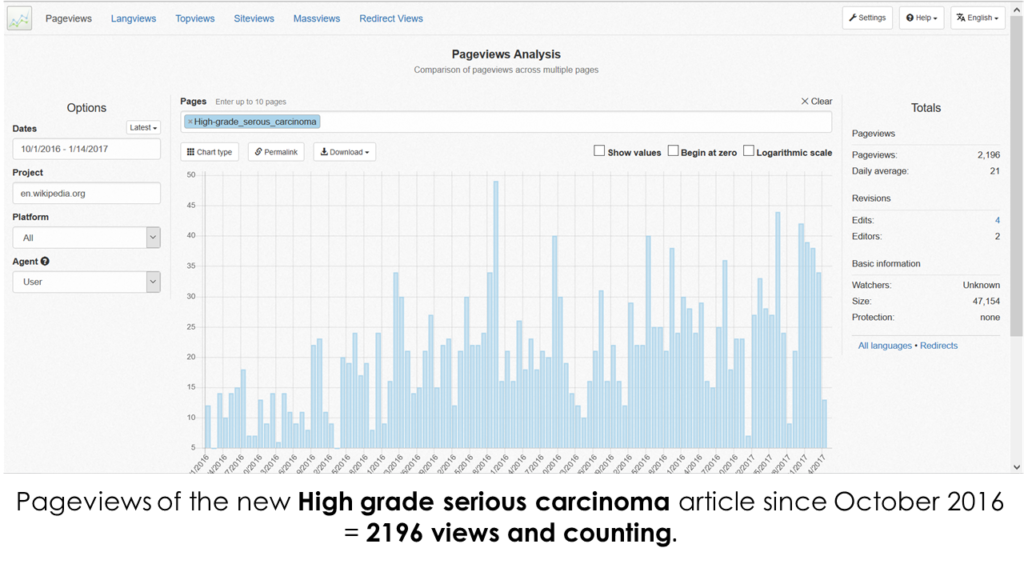
Pageviews for the High Grade Serous Carcinoma
Guest post:
Reflections on a Wikipedia assignment
by Áine Kavanagh.
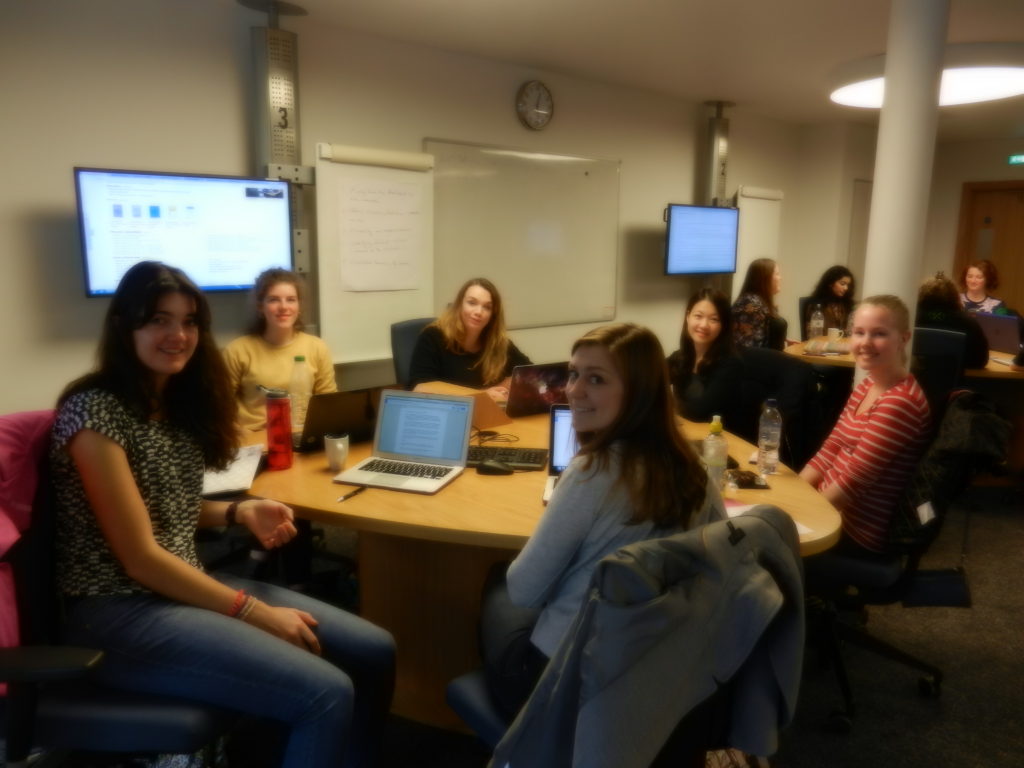
Reproductive Medicine students – September 2016
The process of writing a Wikipedia article involved me trying to answer the questions I was asking myself about the topic. What was it? Why should I care about it? What does it mean to society? I also needed to make the answers to those questions clear to other people who can’t see inside my head.
It then moved onto questions I thought other people might ask about the topic. Writing for Wikipedia is really an exercise in empathy and perspective. Who else is going to want to know about this and what might they be interested in about it?
Is what I’m writing accessible and understandable? Am I presenting it in a useful way? It’s an incredibly public piece of writing which is only useful if it serves the public, so trying to put yourself in the frame of someone who’s not you reading what you’ve written is important (and possibly the most difficult part).
It’s also about co-operation from the get-go. You can’t post a Wikipedia article and allow no one else to edit it. You are offering something up to the world. You can always come back to it, but you can never make it completely your own again. The beauty of Wikipedia is in groupthink, in the crowd intelligence it facilitates, but this means shared ownership, which can be hard to get your head around at first.
It’s a unique way of writing, and some tips for other students starting out on a Wikipedia project is to not be intimidated. Wikipedia articles in theory can be indefinitely long and dense and will be around for an indefinitely long time, so writing a few hundred words can seem like adding a grain of sand to a desert. But if the information is not already there then you are contributing – and what is Wikipedia if not just a big bunch of contributions?
There’s also the fear that editors already on Wikipedia will swoop down and denounce your article as completely useless – but the beauty of storing information is that you can never really have too much of it. There’s no-one who can truly judge what is and isn’t worthy of knowing*.
*There’s no-one who can judge what’s worth knowing, but the sum of human knowledge needs to be organised, and so there are actually guidelines as to what a Wikipedia article is (objective account of a thing) and is not (platform for self-promotion).
Áine Kavanagh

Getting citations into Wikipedia – can you spare 16 minutes to mark Wikipedia’s 16th birthday?

#1Lib1Ref – 1 Librarian adding 1 Reference
It’s been quite the week in politics this week. #CitationDefinitelyNeeded

#1Lib1Ref – 1 Librarian adding 1 Reference
On Sunday 15th January 2017, Wikipedia will turn 16 years old. How often do you think you have used the free online encyclopaedia in this time?
In this Google Talk, the Wikimedia Foundation’s Executive Director, Katherine Maher, speaks engagingly about Wikipedia’s humble beginnings in 2001, where it is now and, importantly, where it is going.
To mark Wikipedia’s birthday, the Wikipedia Library are repeating their successful #1Lib1Ref campaign from last year. This global campaign “1 Librarian 1 Reference” (#1Lib1Ref) is to get Information Services professionals and educators adding citations to Wikipedia.
Events are taking place at the National Library of Scotland, the Bodleian Library in Oxford and all over the globe from January 15th To February 3rd 2017 but here at the University of Edinburgh we are kicking things off by asking you to spare a mere 16 minutes to mark Wikipedia’s 16 years on Friday 20th January 2017. (You won’t even need to leave your desk).
Your 1,2,3 to taking part in next Friday’s #1Lib1Ref event.
- Have a nosy at what is involved: https://meta.wikimedia.org/wiki/The_Wikipedia_Library/1Lib1Ref – This link runs through what is involved (essentially finding one reference to back up a statement on Wikipedia that has no citation backing it up).
- Create a Wikipedia account ahead of Friday’s event. This 3 minute video shows what you need to do to setup your account. (NB: It is better if you do create an account at home ahead of time as Wikipedia limits the number of accounts that can be created from a single IP address within a 24 hour period to a mere 6 accounts.)
- On the day itself – This 5 minute video demos what you need to do. Essentially using the Citation Hunt tool to find a Wikipedia page that is both missing a citation & that you are interested in helping out; and guiding you as to how to go about finding a suitable reference to fill that knowledge gap. NB: This post from the Biodiversity Heritage Library also illustrates the process too.
As you save your citation, please remember to add the hashtag #1Lib1Ref in your edit summary so that we can track participation in the event. We will announce these contributions on social media with the strengthening Wikipedia’s links to scholarly publications and celebrating the collective expertise of the world’s Information Service professionals (so any pics you can share with the #1Lib1Ref hashtag would be greatly appreciated).
- Wikipedia – We are not in a Post Fact World #FactsMatter (4 minute video)
This is a chance to create incoming links or citations from articles that are usually the top Google hit for their topic. Citations can be to paper or electronic sources, that you are interested in professionally or otherwise. If you can supply citations for topics or authors that are under-represented in Wikipedia, then all the better. In January 2016, librarians around the world made thousands of edits to Wikipedia, with publicity seen by millions of people. You can read more about last year’s event here.
“We live in the information age and the aphorism ‘one who possess information possesses the world’ of course reflects the present-day reality.” (Vladimir Putin in Interfax:Russia & CIS Presidential Bulletin, 30 June 2016).
To mark Wikipedia’s 16th birthday, and to assert that facts really do matter, let’s find Wikipedia pages we can help improve… and spend a few moments improving them with a reference (or two).
#FactsMatter #1Lib1Ref


The artwork “Een vertaling van de ene taal naar de andere” / “A Translation from one language to another” by Lawrence Weiner. Placed in 1996 at the Spui (square) in Amsterdam. It consists of three pairs of two stones placed against each other. On each stone there is an inscription “A Translation from one language to another”, in another language – Dutch, English, Surinam and Arabic. Author: brbbl (CC-BY-SA)
The University of Edinburgh offers a taught Translation Studies. As part of an independent study module, students were asked to choose a Wikipedia article that was at least 4000 words long and to translate it into another language. 29 people took part in the assignment, translating articles from English to Arabic, Chinese, French, Greek, Turkish, Japanese and from Spanish, Chinese, Japanese, Arabic, and Norwegian (bokmal) into English. Students were allowed to choose the article and language they wished to work on but the article choice had to be run past their course tutor who would check the article’s suitability for a class assignment in terms of the article’s subject and the degree of challenge to the language used in the article. Importantly, the tutors were prepared to reject any articles they thought were too simple in the language being used or too frivolous in the subject matter with students reminded that the purpose of the assignment was to further develop their translation skills in tandem with supporting the dissemination of important articles into another language. (The relative importance of the article being decided in negotiation between the student and the tutor.)
The assignment was structured with two in-person training sessions after which students were expected to translate the articles in their own time and submit them. The first in-person session introduced the students to editing Wikipedia and then got them to select the articles they would be working on. The Gapfinder tool was used to help identify trending pages with no corresponding coverage in the target language. A week later at the second in-person session, the students began the process of translating their chosen article.
The students used the Content Translation tool to prepare their translations which helped with the formatting of the article so that they could focus on the translation itself. There is a screencast demonstrating how to use the Content Translation tool which students watched at the end of session one and received more detailed instruction on the use of the tool in session two. The students had until the end of the semester (15 December) to complete and publish the translations.
As of writing, the assignment is now complete and a third in-person drop-in session was held to assist the students with any issues relating to the publishing of the articles. The students were also supported by email. Issues did arise, such as the source article being edited by a Wikipedia community member during the translation process. However, the student in question was able to flag this concern via email and I was able to look at the issue and advise promptly not to change the nature of the translation but instead stick with the older version they had begun to translate. Referencing and notability has also been flagged up when an article has been published in the target Wikipedia but again the student in question was reassured that ensuring the referencing is as clear & detailed as on the source Wikipedia will mean there is no problem. The course is routinely monitored with any issues noted to ensure best practice is documented for future iterations of this project. Student volunteers and course tutors have also provided video interview feedback on the course.
The is the first time Wikimedia UK has supported a translation classroom course, and the first time it has encouraged the use of the Content Translation tool – and we are keen to learn how this will develop. The course has been making a very positive impression within the university so far and there’s an commitment on both sides to continue this assignment next semester too.
In addition, through the running of this course in Translation Studies MSc, the residency has been introduced to Edinburgh University’s Translation Society (EUTS). Student representatives from EUTS learned of the Wikipedia Translation assignment through the Translation Studies MSc course leader and requested to take part in the exercise. As there was not enough in the computing lab to accommodate them during the in-person sessions, the EUTS reps sought to meet in order to learn more about how their society could collaborate with Wikimedia in a way that would be mutually beneficial. The meeting was extremely positive and there are now plans to have an EUTS translation project beginning in February 2017 where the student reps will invite all 100+ of their members to attend and take part in. Discussions are at an early stage but both parties are keen to see this happen with current consideration being given to whether the project should have an over-arching theme, fitting in with students’ interest areas and Wikimedia’s strategic priorities; using University College London’s translation editathon themed on women’s health as a model for the collaboration.
There have been additional benefits from the session as also in attendance during the assignment was a staff member from Edinburgh University’s MRC Centre for Regenerative Medicine. The staff member in question works as a Eurostemcell Translation Manager and is keen to support the translation of Eurostemcell related articles into different languages as the MRC Centre for Regenerative Medicine works closely with European partner labs to share research knowledge related to the study of stemcells; particularly on Wikipedia as they receive research funding on this very basis. Consequently, a Danish Wikimedia trainer has been contacted and secured for a scheduled Eurostemcell Wikipedia editathon at a Danish partner lab in Copenhagen at the end of November 2016. If this Danish pilot works well then the Eurostemcell team plan on holding Wikipedia editathons every year for World Stem Cell Day.
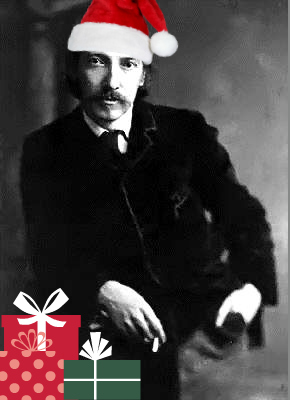
In ‘A Christmas Sermon’, a short public domain text available on Wikisource, Robert Louis Stevenson meditates on the holiday season, death, morality and man’s main task in life: “to be honest, to be kind… to make upon the whole a family happier for his presence.”
‘A Christmas Sermon’ appeared in a collection of essays entitled ‘Across the plains: with other Memories and Essays’ (1892) and was written, along with The Master of Ballantrae, shortly after Stevenson’s father had passed away and while Stevenson himself was recovering from a lung ailment at Lake Saranac, New York, in the winter of 1887.
More openly-licensed Christmas texts can be found at Wikisource’s Portal:Christmas including Is There a Santa Claus? (1897).
Wikisource, the hyper library hosts over 340,000 out-of-copyright longer texts (plays, poems, short stories, novels, letters, speeches, constitutional documents, songs & more) as demonstrated by the range of texts on Robert Louis Stevenson’s page here.
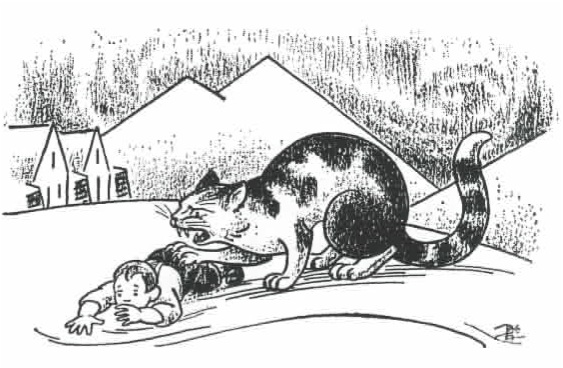
Yule Lads – on the greatest Open Education Resource: Wikipedia.
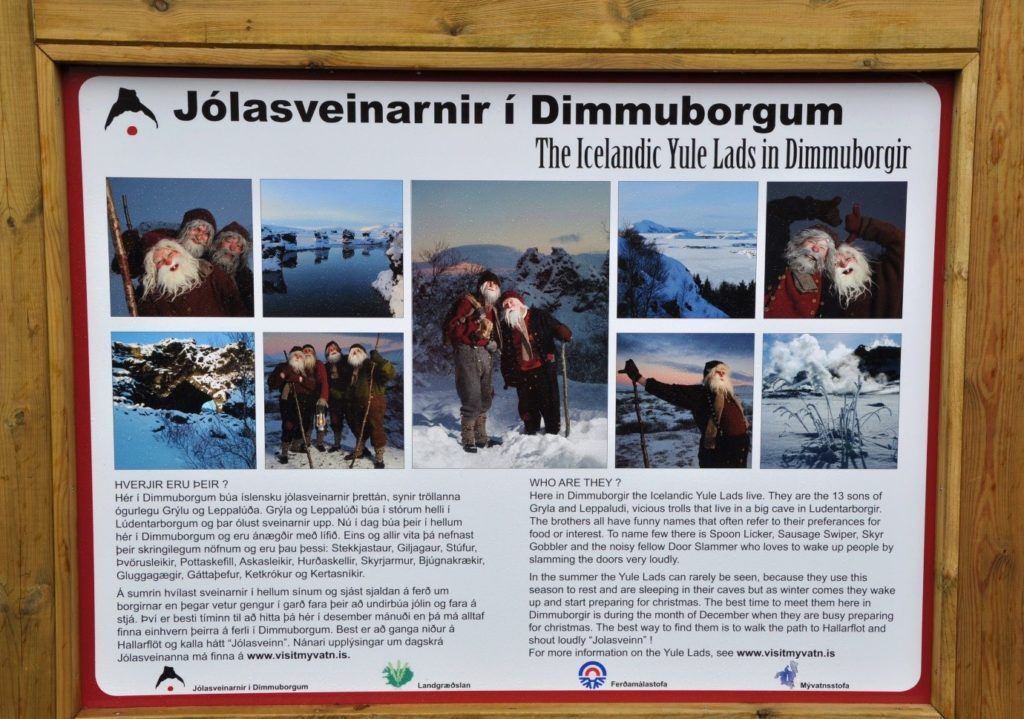
The Yule Lads – Picture taken by Inga Vitola CC-BY via Flickr (https://www.flickr.com/photos/360around/8438686745/in/photolist-dRGtz4-dBRVEa-dBGFuw-5MeWDT-dBGFTu)
Yule lads are 13 trolls from Icelandic folklore who put rewards (or punishments) in shoes laid out on windowsills by children on the 13 nights in the run up to Christmas. Some Yule lads are mere pranksters while some are… homicidal monsters who eat children.
You can find out more about the Yule lads (and when they’re due to arrive in town) on the greatest open education tool; Wikipedia.
But just in case, below is a list of their names & descriptions so you can watch out for them (and their monstrous Yule Cat)!

Yule cat (from
Public Domain Super Heroes)
| Icelandic Name | English translation | Description |
| Stekkjarstaur | Sheep-Cote Clod | Harasses sheep, but is impaired by his stiff peg-legs. |
| Giljagaur | Gully Gawk | Hides in gullies, waiting for an opportunity to sneak into the cowshed and steal milk. |
| Stúfur | Stubby | Abnormally short. Steals pans to eat the crust left on them. |
| Þvörusleikir | Spoon-Licker | Steals spoons to lick. Is extremely thin due to malnutrition. |
| Pottaskefill | Pot-Scraper | Steals leftovers from pots. |
| Askasleikir | Bowl-Licker | Hides under beds waiting for someone to put down their bowl which he then steals. |
| Hurðaskellir | Door-Slammer | Likes to slam doors, especially during the night. |
| Skyrgámur | Skyr-Gobbler | A Yule Lad with an affinity for skyr. |
| Bjúgnakrækir | Sausage-Swiper | Would hide in the rafters and snatch sausages that were being smoked. |
| Gluggagægir | Window-Peeper | A voyeur who would look through windows in search of things to steal. |
| Gáttaþefur | Doorway-Sniffer | Has an abnormally large nose and an acute sense of smell which he uses to locate laufabrauð. |
| Ketkrókur | Meat-Hook | Uses a hook to steal meat. |
| Kertasníkir | Candle-Stealer | Follows children in order to steal their candles. |

Histropedia Timelines – In the (Saint) Nick of Time.
Can you spot Saint Nick in the below timeline of saints?

Screengrab of Histropedia Wikidata Query Viewer (CC-BY-SA).
For today’s post, the Open Education resource we present to you is Histropedia – the timeline of everything.
Histropedia allows users to create visually dynamic timelines using structured data from Wikidata, articles from Wikipedia and images from Wikimedia Commons. It has in excess of 340,000 timelines listing 1.5 million articles from Wikipedia: including timelines on the Battles of World War One, the Heroic Age of Antarctic Exploration, the Novels by Charles Dickens, Empires, Famous Artists, the filmography of David Bowie and many more.
This 1 minute 22 second video demonstrates how quickly & easily timelines can be put together using Wikipedia articles & categories to dramatically visualise events.
By way of example, I was able to create this Santa Claus in the movies timeline in a matter of minutes going from the 1900 movie, A Christmas Dream, by Georges Méliès right up to modern day with films like Trading Places (1983), Miracle on 34th Street (1994) and Arthur Christmas (2012). The published timeline is now available for others to view and add to as a free open education resource where each timeline event can be clicked on to take you through to the Wikipedia article to find out more.
 Screengrab of Histropedia timeline for Santa Claus in the movies. (CC-BY)
Screengrab of Histropedia timeline for Santa Claus in the movies. (CC-BY)
Further, now that the Histropedia now has a Wikidata Query Viewer option this means that the structured data can now be queried even further. For example, I was curious to find out more about Saint Nick so I was able to ask Wikidata to show me all the saints it had information about and show them on a timeline according to their year of birth and colour coded by their place of birth. Click here to view the result.

Screengrab from Histropedia Wikidata Query Viewer Tutorial – Timeline of University of Edinburgh female alumni colour-coded by place of birth and labelled in Japanese, Russian, Arabic and English (CC-BY)
Histropedia’s developers, Navino Evans and Sean McBirnie, joined us at Repository Fringe at the University of Edinburgh in August this year where we recorded a short video tutorial in order to demonstrate how to create a Histropedia timeline using their Wikidata Query Viewer – this time on female alumni of the University of Edinburgh; colour-coded by their place of birth and labelled in Japanese, Russian, Arabic & English (depending on whether the query could find an article in these 4 different language Wikipedias).
This OER video tutorial has now been viewed a thousand times and is available to view on the university’s Media Hopper channel on a CC-BY license.
To find out more about Histropedia, you can read this article from the Wikimedia UK blog but why not have a go yourself!
